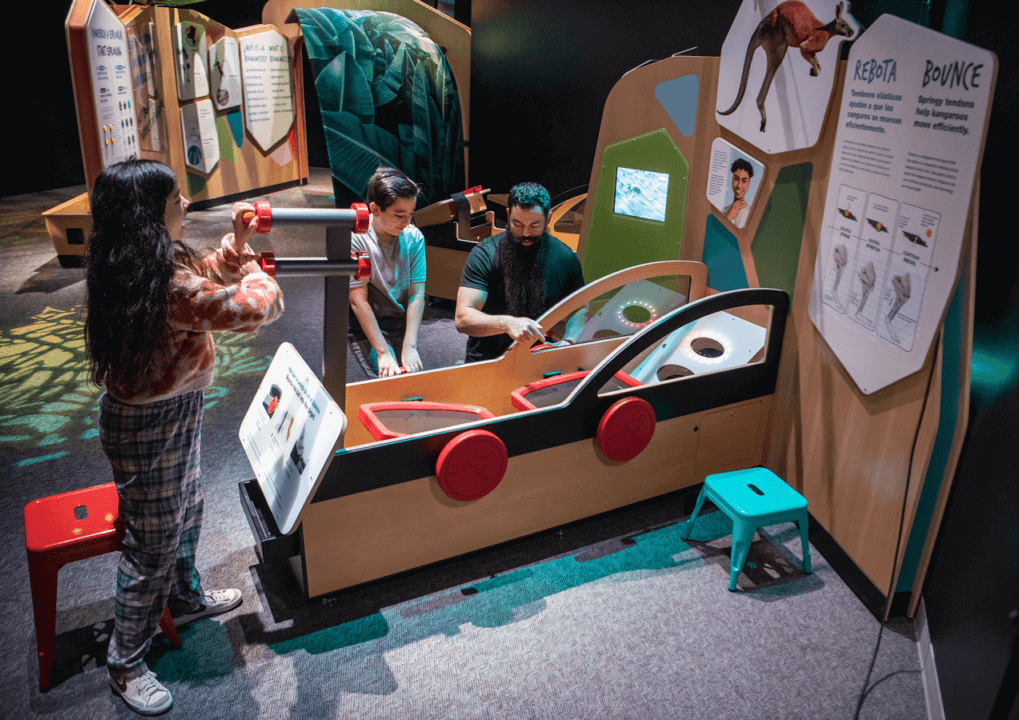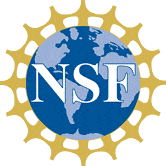
Materials
Before proceeding with this module, please make sure that have the following materials available and ready for use
Personal connections to Engineering Practices
Module 1 and Module 2 of this PD focused on describing engineering and finding connections with engineering practices people use at exhibits. The activities in Module 3 bring those aspects together to explore how we talk and learn with visitors about engineering practices at exhibits.
Museums must continue working towards being culturally relevant and inclusive for our museum guests. Many commonly used science narratives are rooted in dominant, white, western, culture. As museum professionals, how can we move away from being the people with the answer or the experts to a place of centering the visitor’s experience and knowledge with engineering practices?
Story sharing with conversation can be a facilitation approach that helps us and visitors relate content to personal lives. The power of stories is that they can shift the power balance in conversations away from education staff to our visitors by centering visitors’ lived experiences. Changing the ways engineering is talked about allows each of us to make our own meaning through the conversation.
To learn more about how story sharing can be useful to museum educators, OMSI hired four Storytelling Ambassadors to join the Museum’s research team. Over the course of a year, the Storytelling Ambassadors had three opportunities to create stories and share them in one-on-one conversations virtually hosted with parents and other caregivers (throughout this PD, we’ll use “caregivers” as a term that includes parents and other people who support children’s learning) from the San Diego area. We called these caregivers the “active audience” because we wanted them to do more than just listen. As we shared our short stories, we explicitly invited them to share their experiences with us. Each of our stories were about three minutes long and focused on one to two engineering practices seen at exhibits and used in personal or community level challenges. Watch this video to learn more about the process.
For this first activity, you are going to start the process the same way.
Using the Personal Connections to Engineering Practices table in the Module 3 Worksheet, make a short list of activities or routines you regularly do during the day or over the course of a week.
Then, take a couple of those activities and map out which of the engineering design practices you use to complete the activity. We have included an example to help you begin.
We encourage you to look at processes in the intermediate and informed categories. When you are done, move on to the next part, Sharing Stories, of this module.
Sharing Stories
The Storyteller Ambassadors worked with OMSI’s Research Team to study how sharing stories as part of a conversation can help people make connections between engineering practices used at the Creatividad silvestre / Wild Creativity exhibits and their usefulness in our everyday lives.
In between rounds of conversations, we analyzed the feedback from the parents and caregivers and our own reflections. When we summarized our findings, we learned that for an active audience to gain insight, recognize familiar situations, feel empowered in engineering, and to share their own stories, our stories as facilitators needed to have certain elements. They needed to be personal, relatable, explicit about engineering in a social context, and have repetitive mentions of the engineering practice. If we wanted their stories to include how engineering practices connected to activities they do for their communities (however they chose to define community), then our conversation needed to include elements of our communities, too.
After the research ended, the OMSI Storytelling Ambassadors were filmed sharing one of their stories with caregivers at OMSI. From those videos, we compiled small segments that highlight the use of the storytelling elements into a short video.
Take a moment to watch the Let’s Talk About Engineering and look for elements that are personal, relatable, explicit about engineering in a social context, and repetitive mentions of the engineering practice.
Make notes of what you observed in the Sharing Stories section in the Module 3 Worksheet.
After you review the videos, continue to the next section of this module, Creating Your Own Story.
Creating Your Own Story
Now it’s time for you to create your own story using one of the engineering practices you observed at an exhibit during Module 2 to your daily life or in your support of community efforts.
If you don’t have engineering related exhibits or programs at your museum, think about meetings, demos, and/or activities you participate in. For an additional dimension, see if you can create a personal story that connects engineering practices to a challenge faced by a community you belong to. Remember, communities can include cultural groups, interest groups, religious communities, fellow museum professionals, online groups, book clubs, quilting clubs, gaming groups, etc.
Use the Story Planner we developed to guide you through this process. You can have the C-PIECE Framework available to help you decide which engineering practice you want to highlight. Remember, try to choose practices in the informed or intermediate levels. Use your filled out story planner to help guide your story creation. Aim for a story that is no longer than three minutes.
Once you have written and edited your story, find a co-worker or friend with whom you can share your story. The goal of conversation is twofold: You are trying to get the person you are talking with to 1) share that they use the practice or a similar one and 2) give examples of how they already use the practice(s) or could in the future. How they use a practice(s) ideally reflects the usefulness of the engineering practice.
You might need to revise parts of your story several times before you are able to elicit connections from your audience. Remember, the goal is to share your own story in a way that allows others to create personal meanings. You’ll know your story has connected when guests share with you how they use engineering practices in their daily lives and with their communities.
For your reference, we included two full written stories from the OMSI Storytelling Ambassadors. The design and format of each story is unique to each person.

You have finished Module 3, PROCEED TO WRAP-UP.

This material is based upon work supported by the National Science Foundation under Grant No. DRL-1811617. Any opinions, findings, and conclusions or recommendations expressed in this material are those of the authors and do not necessarily reflect the views of the National Science Foundation.